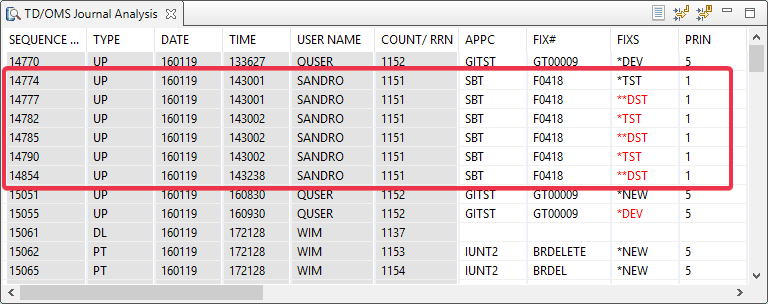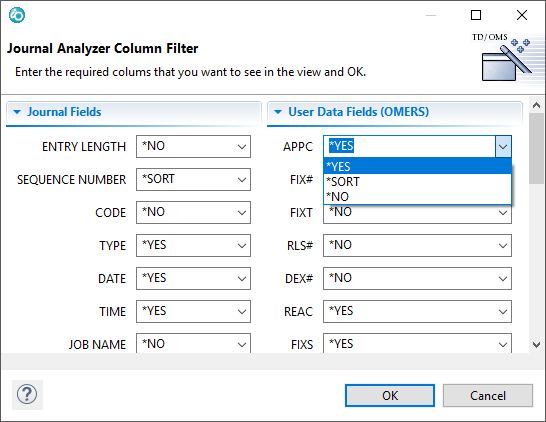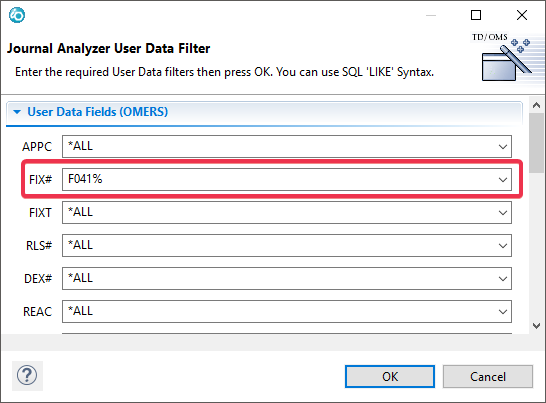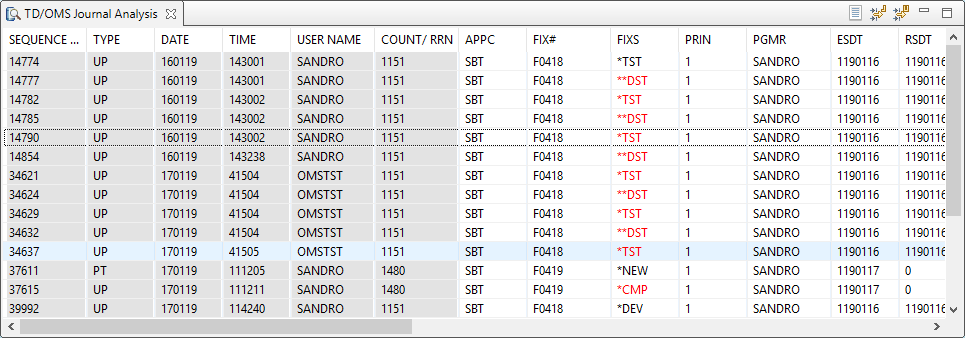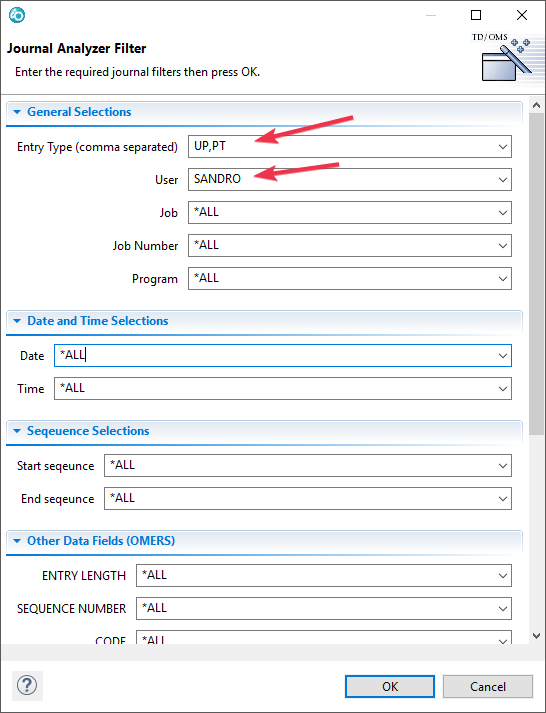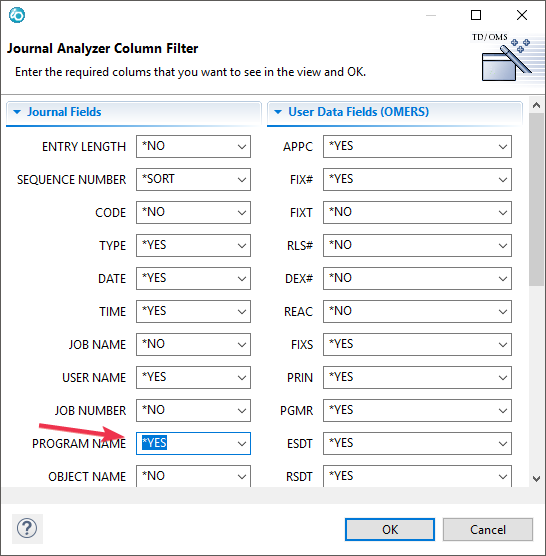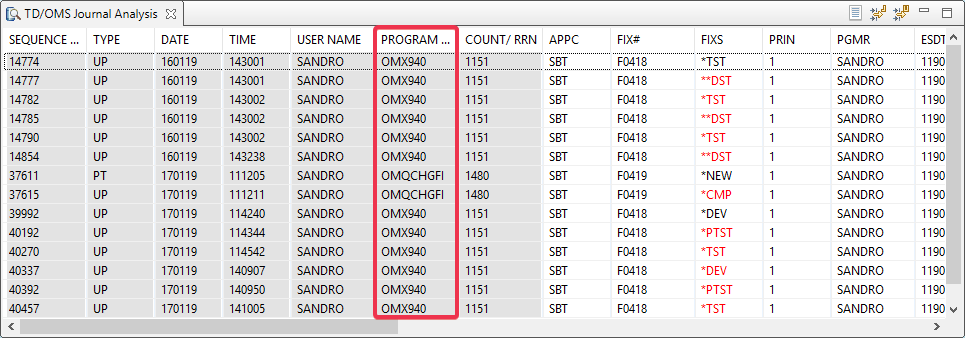EWM:TD/OMS Journal Analyzer
Prerequisites
The analyzer requires a working library that is pointed to by the OMQJRNWRKLIB variable. Please see this registry description on how to add it.
Please note:
- The library must be in the same IASP as the data you are going to analyze
- OMS must have *USE rights for the library and the CRTAUT parameter must be set to *USE.
TD/OMS Journal Analyzer view
The TD/OMS Journal Analyzer view makes it possible to analyze a Journal on a file. To activate the view, select the context menu on any file and choose "New/Journal Analysis".
The view will show combined information from the Journal Entry file and your Data file. Since the number of records and the number of columns can become very large, you are able to select and filter both. In the example below we have selected the CUSTS file to analyze the data. The active filter shows a before and after record and it is visible which field has changed.
Selecting Columns to Display
Select "Columns" from the context menu or toolbar to open the column selection dialog. Select the columns that you want to see in the list and if you want this column to be sortable.
On the left you will find the fields of the user file (OMERS in this case) and on the right, you will find the fields from the journal.
Filtering User Data
If you are looking for a specific value or key then you can use the User Data Filter dialog. It shows all the columns on your user table. You can use SQL LIKE syntax to filter the requested data. In this case we are interested in what user SANDRO did with the status of task F0148. We used F014% to filter all the tasks that start with F014 (we could have also used F0418 without %).
The result if this query is quite interesting. It turns out that there were more users that changed the FIXS field. We can see that because any change of value compared to the previous journal entry will be in the color red.
Filtering Journal Data
Use this dialog to filter Journal data. Here you can filter on a date range, journal sequence, journal types, jobs, users and so on. This will help you pinpoint your search.
Finally, we want to see which program was used to update these records.
Result
The result of applying all the filters and choosing the columns is shown below.

